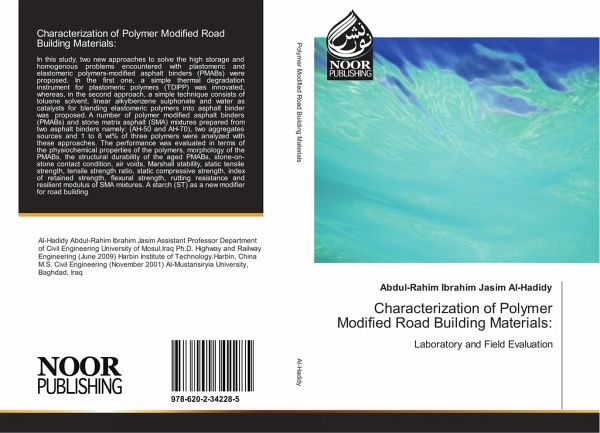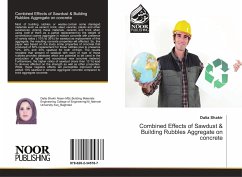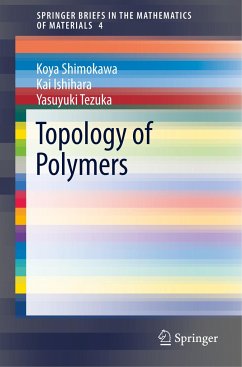
Characterization of Polymer Modified Road Building Materials:
Laboratory and Field Evaluation
Versandkostenfrei!
Versandfertig in 1-2 Wochen
37,99 €
inkl. MwSt.

PAYBACK Punkte
19 °P sammeln!
In this study, two new approaches to solve the high storage and homogenous problems encountered with plastomeric and elastomeric polymers-modified asphalt binders (PMABs) were proposed. In the first one, a simple thermal degradation instrument for plastomeric polymers (TDIPP) was innovated, whereas, in the second approach, a simple technique consists of toluene solvent, linear alkylbenzene sulphonate and water as catalysts for blending elastomeric polymers into asphalt binder was proposed. A number of polymer modified asphalt binders (PMABs) and stone matrix asphalt (SMA) mixtures prepared fro...
In this study, two new approaches to solve the high storage and homogenous problems encountered with plastomeric and elastomeric polymers-modified asphalt binders (PMABs) were proposed. In the first one, a simple thermal degradation instrument for plastomeric polymers (TDIPP) was innovated, whereas, in the second approach, a simple technique consists of toluene solvent, linear alkylbenzene sulphonate and water as catalysts for blending elastomeric polymers into asphalt binder was proposed. A number of polymer modified asphalt binders (PMABs) and stone matrix asphalt (SMA) mixtures prepared from two asphalt binders namely: (AH-50 and AH-70), two aggregates sources and 1 to 8 wt% of three polymers were analyzed with these approaches. The performance was evaluated in terms of the physiochemical properties of the polymers, morphology of the PMABs, the structural durability of the aged PMABs, stone-on-stone contact condition, air voids, Marshall stability, static tensile strength, tensile strength ratio, static compressive strength, index of retained strength, flexural strength, rutting resistance and resilient modulus of SMA mixtures. A starch (ST) as a new modifier for road building












